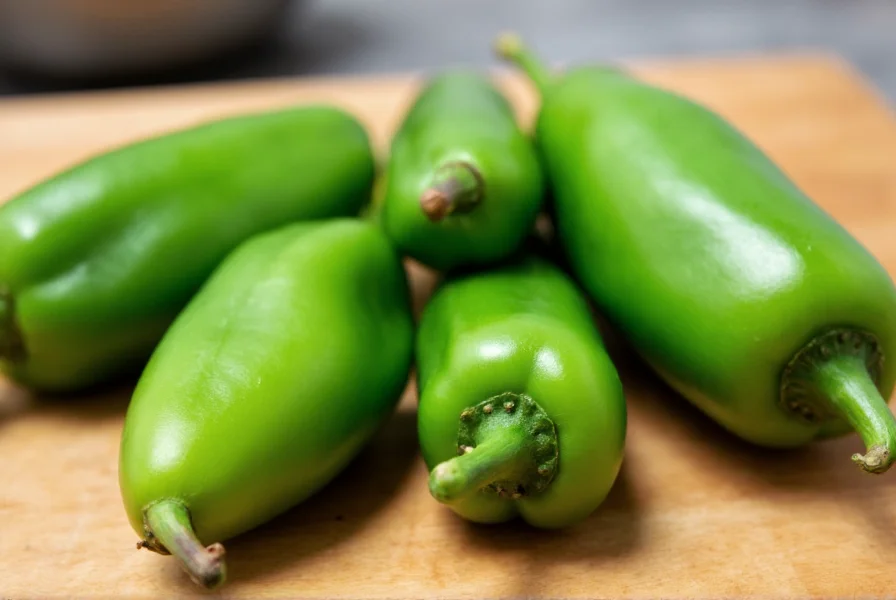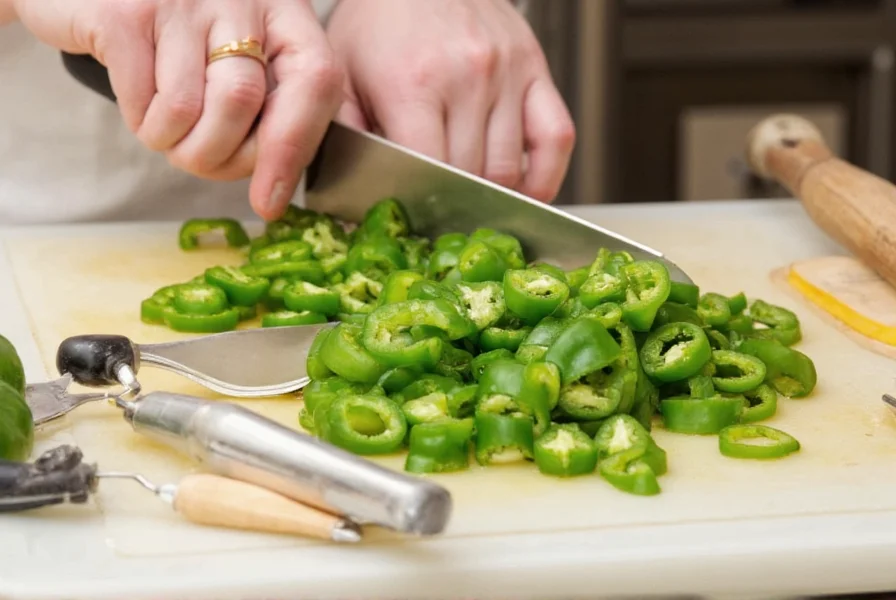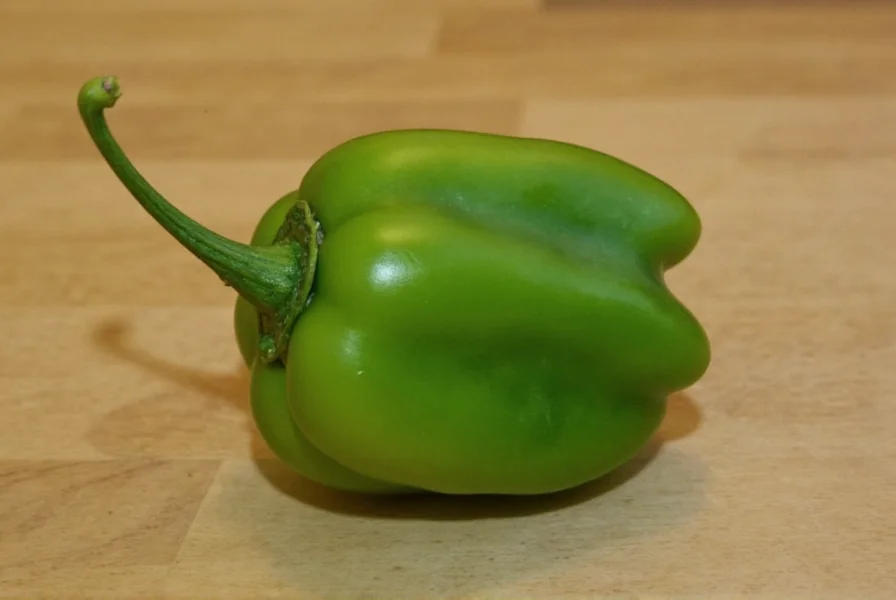Jalapeños represent one of the most popular chili peppers worldwide, bridging the gap between mild and hot varieties. Understanding their characteristics helps both home cooks and gardening enthusiasts make informed decisions about usage and cultivation. Unlike extremely hot peppers that can overwhelm dishes, jalapeños provide balanced heat that enhances rather than dominates flavors.
Understanding Jalapeño Pepper Characteristics
When examining jalapeño pepper heat level, several factors influence their spiciness. The Scoville scale measurement of 2,500–8,000 SHU places them firmly in the medium category—significantly milder than habaneros (100,000–350,000 SHU) but noticeably hotter than poblano peppers (1,000–2,000 SHU). Environmental conditions during growth, including soil composition, water availability, and sunlight exposure, can cause natural variations in heat intensity.
The distinctive appearance of jalapeños includes smooth, cylindrical bodies typically 2–4 inches long with rounded ends. As they mature, their color transitions from vibrant green to deep red, with red jalapeños often developing slightly sweeter notes. The internal structure contains white pith and seeds that contribute significantly to the pepper's heat—removing these reduces spiciness considerably.

Jalapeño Comparison Chart
| Pepper Variety | Scoville Heat Units | Flavor Profile | Common Uses |
|---|---|---|---|
| Jalapeño | 2,500–8,000 | Grassy, slightly fruity | Salsas, nachos, poppers, pickling |
| Serrano | 10,000–23,000 | Sharp, bright | Pico de gallo, hot sauces |
| Habanero | 100,000–350,000 | Tropical fruit, floral | Caribbean sauces, hot sauces |
| Bell Pepper | 0 | Sweet, vegetal | Stir-fries, salads, stuffed dishes |
Culinary Applications of Jalapeños
Professional chefs and home cooks value jalapeños for their versatility in jalapeño pepper cooking uses. Fresh jalapeños work exceptionally well in salsas verde, where their grassy notes complement tomatillos. For those wondering about fresh jalapeño vs canned jalapeño, the fresh variety offers brighter flavor while canned versions (often labeled "chipotles in adobo") provide smoky depth. Roasting jalapeños over an open flame develops complex caramelized flavors ideal for quesadillas or cream sauces.
One popular preparation method involves creating jalapeño poppers—hollowed peppers stuffed with cheese and breadcrumbs, then baked or fried. For milder applications, removing the seeds and white membranes significantly reduces heat while preserving flavor. When handling hot peppers, always wear gloves to prevent capsaicin transfer to sensitive areas.
Nutritional Benefits of Jalapeños
Examining jalapeño pepper nutritional benefits reveals impressive health properties. A single medium jalapeño contains just 4 calories while providing 10% of the daily recommended vitamin C intake. The capsaicin responsible for their heat has been studied for potential metabolic benefits and pain relief properties. Research suggests regular consumption of chili peppers may support cardiovascular health and provide anti-inflammatory effects.
Jalapeños also contain vitamin B6, potassium, and antioxidants like carotene and lutein. These compounds work synergistically to support immune function and eye health. For those concerned about digestive sensitivity, starting with small amounts allows the body to gradually adapt to capsaicin exposure.
Growing and Harvesting Jalapeños
For gardeners interested in growing jalapeño peppers at home, these plants thrive in warm climates with well-draining soil and full sun exposure. They typically require 70–80 days from transplanting to maturity. Harvesting jalapeños while still green yields the classic flavor profile, while allowing them to ripen to red develops sweeter notes with slightly increased heat.
Container gardening works well for jalapeños, making them suitable for patios or balconies. Regular harvesting encourages continued production throughout the growing season. When picking jalapeños, use scissors rather than pulling to avoid damaging the plant's delicate branches.
Storage and Preservation Techniques
Understanding proper jalapeño pepper storage methods extends their usability. Fresh jalapeños maintain quality for 1–2 weeks when stored in the refrigerator's crisper drawer. For longer preservation, freezing whole peppers works effectively—they'll retain flavor for up to 6 months though texture changes upon thawing.
Pickling represents one of the most popular preservation methods, creating the familiar "sport peppers" used on Chicago-style hot dogs. Drying jalapeños produces chipotles when smoked, or simply dehydrated jalapeños for use in spice blends. Always label preserved peppers with dates to track freshness.
Safety Considerations When Handling Jalapeños
Proper handling techniques address common concerns about how to handle jalapeño peppers safely. Always wear disposable gloves when preparing multiple peppers, especially when removing seeds and membranes where capsaicin concentration is highest. Avoid touching your face during preparation, and wash hands thoroughly with soap afterward—even residual oils can cause discomfort hours later.
If capsaicin exposure occurs, dairy products like milk or yogurt provide relief by binding to the oil-based compound. Water proves ineffective as it spreads rather than neutralizes the irritant. For severe reactions, consult a healthcare professional.
Common Substitutions and Alternatives
When considering jalapeño pepper substitution options, serranos provide similar flavor with increased heat, while poblanos offer milder alternatives. For those seeking comparable heat without jalapeños, a combination of bell pepper and cayenne pepper can approximate the flavor profile. In cooked applications, canned green chilies often serve as acceptable substitutes.
The choice between jalapeño vs serrano pepper depends on desired heat intensity—serranos run approximately 2-3 times hotter. For raw applications like pico de gallo, this difference significantly impacts the final dish. Understanding these relationships helps cooks adjust recipes confidently when specific peppers aren't available.

Final Considerations
Whether you're exploring how hot are jalapeño peppers for recipe development or seeking the perfect pepper for your garden, understanding their characteristics ensures successful culinary applications. The jalapeño's balanced heat profile makes it accessible to most palates while still providing distinctive flavor. By considering factors like ripeness, preparation methods, and proper handling techniques, cooks can maximize the versatility of this beloved chili pepper across countless dishes.











 浙公网安备
33010002000092号
浙公网安备
33010002000092号 浙B2-20120091-4
浙B2-20120091-4